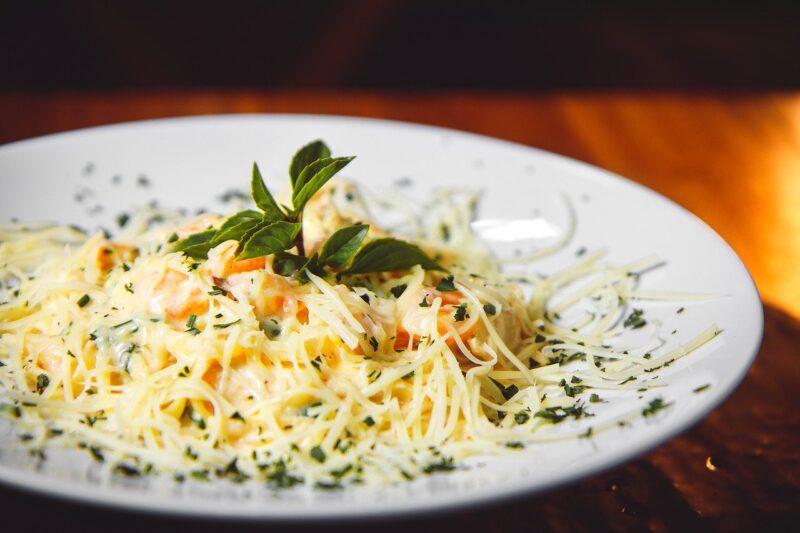The Forgotten Origins of Pasta and Its Journey to Italy
November 15, 2024

Pasta is often hailed as one of the quintessential symbols of Italian cuisine, evoking images of spaghetti tossed in rich tomato sauce, lasagna layered with melted cheese, and gnocchi served with fragrant pesto. However, the origins of pasta are far more complex and fascinating than many realize, steeped in a culinary history that stretches across continents and centuries. This article delves into the forgotten origins of pasta, tracing its journey from ancient civilizations to the tables of Italy.
1. Early Evidence of Pasta-Like Dishes
Pasta’s history can be traced back to ancient Asia, with evidence suggesting that similar forms of pasta were consumed by various cultures long before its popularization in Italy. Archaeological findings indicate
that the earliest forms of pasta may have originated in China around 2000 BC. Wheat, one of the main ingredients of pasta, was cultivated in ancient China, where it was milled into flour and combined with water to create dough. This dough was then shaped into different forms and cooked in water or steamed.
Historians also point to the ancient Greeks, who produced a dish called ‘laganon,’ made from sheets of dough cut into strips and often paired with various sauces. This ancient precursor to modern pasta hints at the widespread appreciation for dough-based dishes across different cultures.
2. The Arab Influence and the Spread of Pasta to the West
By the 7th century, the spread of pasta to the Mediterranean region was significantly influenced by the trade and cultural exchange with the Arab world. The Arab conquest of Sicily in the 9th century played a vital role in introducing pasta to Italy. In the Middle Ages, Sicilian culinary practices were heavily influenced by their Arab rulers, who brought spices, dried fruits, and other food items that would shape the island’s cuisine.
During this period, an early form of pasta known as ‘itriyya’ was created in the Arab world. It was made by drying noodles made from semolina flour and water, which was a revolutionary idea that allowed for longer storage and transport. This technique helped introduce the concept of dried pasta to Italy, leading to the bakeries in Sicily producing it for local consumption and trade.
3. Pasta’s Migration to Mainland Italy
By the 12th century, pasta began to gain popularity beyond Sicily, migrating to mainland Italy. Notably, cities such as Naples became significant hubs for the production and consumption of pasta. It was during this time that durum wheat, a grain specifically used for pasta making, became widely cultivated in Italy, solidifying the country’s position as the center of pasta production.
Recipes began to evolve, and various shapes and forms of pasta emerged, driven by regional preferences and available ingredients. From the long, thin strands of spaghetti to the stuffed shapes of ravioli, pasta varieties reflected the diverse culinary traditions of Italy.
4. The Birth of Italian Pasta Dishes
Italy’s mastery of pasta saw it evolve from a simple sustenance food to becoming a centerpiece of Italian gastronomy. The first documented recipe for pasta was published in the 13th century in a Latin cookbook called ‘Liber de Coquina.’ This marked the beginning of pasta being recognized not merely as food but as a celebrated dish worthy of intricate recipes and preparations.
As pasta grew in popularity, it also began to receive a variety of accompaniments, evolving from its early forms to the iconic sauces we know today. The introduction of tomatoes, brought to Europe after the Columbian Exchange, transformed pasta dishes. Combining tomato sauce with pasta created flavors that became foundational to Italian cuisine, solidifying the dish’s cultural significance.
5. Cultural Significance and the Modern Era of Pasta
As the 20th century ushered in an age of globalization, pasta found its place as an international staple. Italian immigrants brought regional pasta dishes to countries around the world, forever changing perceptions of Italian cuisine. Pasta soon evolved into various forms globally, influencing and integrating into culinary traditions far beyond its Italian origins.
Today, pasta represents more than just a meal; it embodies tradition, creativity, and the idea of family gatherings around the dinner table. Contemporary chefs continue to innovate with pasta, introducing new ingredients and techniques while paying homage to its rich history. Pasta remains a culinary canvas upon which chefs innovate, crafting dishes that bridge traditional and modern culinary practices.
Conclusion
The journey of pasta from its forgotten origins to Italy encapsulates a fascinating narrative of cultural exchange, innovation, and enduring love for food. It is a testament to how deeply food resonates within cultures and how it evolves over time to shape identities and traditions. As we twirl spaghetti around our forks or savor a bite of tortellini, we partake in a global story that has unfolded over millennia, driven by creativity, adaptation, and an everlasting passion for delicious food.
Whether enjoyed in a rustic dish at a family gathering or a gourmet plate at a fine dining restaurant, pasta’s history enriches every bite, connecting us with centuries of culinary evolution and cultural significance.








